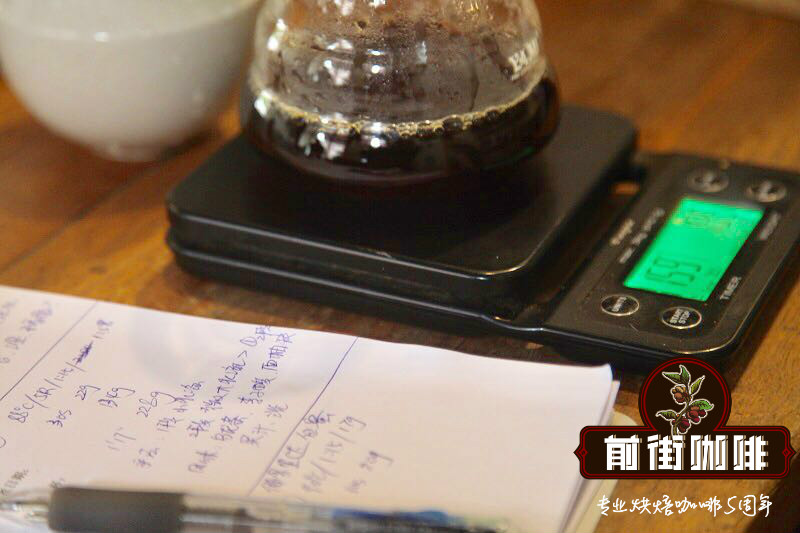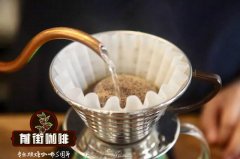What is Indian monsoon coffee? What are the flavor characteristics of Indian-style Malaba coffee?

Professional coffee knowledge exchange more coffee bean information please follow the coffee workshop (Wechat official account cafe_style)
It is said that a long time ago, during the shipping of raw coffee beans from India to Europe, the raw beans were affected by the high temperature and moisture in the Indian Ocean. This is the origin of the "wind stain." In addition to the expansion and enlargement of the size of the raw beans after the wind stain, the color has also changed from emerald green to golden yellow. The brewed coffee is said to taste mellow and has a unique taste, which has become a feature of Malaba coffee in India.
Later, "wind stains" became a special treatment of coffee beans.
In May or June every year, monsoon phenomena begin to appear in southwestern India, so when coffee beans are harvested, they are specially placed in the moist southwest monsoon "wind stains", using the moisture and hot weather in the Indian Ocean to stain coffee beans. After 4 UV 16 months of monsoon blowing, the size of the coffee beans, the color began to change from green to golden yellow, cleverly, the acidity of the beans was also reduced. This is the Monsooned Malabar wind-stained Malaba, also known as the monsoon Malaba.
It is said that a long time ago, during the shipping of raw coffee beans from India to Europe, the raw beans were affected by the high temperature and moisture in the Indian Ocean. This is the origin of the "wind stain." In addition to the expansion and enlargement of the size of the raw beans after the wind stain, the color has also changed from emerald green to golden yellow. The brewed coffee is said to taste mellow and has a unique taste, which has become a feature of Malaba coffee in India.
Later, "wind stains" became a special treatment of coffee beans.
Wind-stained coffee needs to be made with sun beans, and all factories dealing with wind-stained coffee face to the west to meet the salty and wet monsoon blowing from the southwest sea. The coffee beans are spread flat in the wind field, the windows are all open, and the wind stains to a certain extent, and then enter the bag, but because the beans will expand a lot in the process, the coffee beans can not be filled too full, and the coffee bags should not be piled too dense to avoid mildew and spoilage due to lack of wind. It is also necessary to pour out coffee beans and replace sacks from time to time to avoid mold, which is a very time-consuming and labor-consuming project. The weathering period is about 12 to 16 weeks, and after it is ripe, it will be fumigated to drive out the weevil, and finally the beans will be screened manually to remove the failed beans that have not turned golden. After three to four months of wind treatment, green coffee beans are twice as large in volume and reduced in weight and density.
Although the wind-stained Malaba coffee beans seem to be big and fat, they are soft beans that are strong and dry outside, a change brought about by the weathering of for several months. Coffee beans have been exposed to the moist monsoon for several weeks, which not only turns the beans yellow, but also reduces the acidity of the coffee itself, and the taste is very special. In addition to serving as a single product, Indian Malaba coffee beans are also suitable for blending integrated coffee beans.
Production resume
Product name: India Monsooned Malabar AA+
Producing country: India, India
Origin: Malaba Malabar
Grade: Malabar AA+
Treatment: wind stains after sun exposure
Variety: Arabica
An overview of flavor
Wheat, straw, roasted nuts, walnut wood, Nanyang spices, black molasses, greasy and sticky
The recommended brewing parameters of Qianjie coffee:
Kalita trapezoidal three-hole filter cup, medium and coarse grinding, water temperature 86 ℃, ratio of powder to water 1:12, cooking time (steaming starts): 30 grams of water after removing the filter cup.
It has a strong aroma of wheat and tea, obvious flavor of chocolate and nuts, and full of sweetness.
Important Notice :
前街咖啡 FrontStreet Coffee has moved to new addredd:
FrontStreet Coffee Address: 315,Donghua East Road,GuangZhou
Tel:020 38364473
- Prev

What's the flavor of Indian-style coffee? How can the Indian monsoon Malaba taste good?
Professional coffee knowledge exchange more information about coffee beans Please pay attention to the coffee workshop (official Wechat account cafe_style) Coffee has become the first drink in the world only 1600 years later, so the recorded history of coffee is only 400 years similar to that of Taiwan. It is generally recognized that Africa is the home of coffee, originated in Ethiopia and spread around the world from the port of Mocha in Yemen.
- Next

How can Salvadoran coffee taste good? Santa Elena Manor Coffee beans characteristic Taste Story
Professional coffee knowledge exchange more coffee bean information please follow the coffee workshop (Wechat official account cafe_style) El Salvador coffee has five major producing areas (Apaneca, Central Belt, Chichontepec, Tecapa Cacahuatique Mountain Range), mostly distributed in 1200 meters above sea level on volcanic ash-covered mountain slopes or plateau areas, October to the following year 2
Related
- Does Rose Summer choose Blue, Green or Red? Detailed explanation of Rose Summer Coffee plots and Classification in Panamanian Jade Manor
- What is the difference between the origin, producing area, processing plant, cooperative and manor of coffee beans?
- How fine does the espresso powder fit? how to grind the espresso?
- Sca coffee roasting degree color card coffee roasting degree 8 roasting color values what do you mean?
- The practice of lattes: how to make lattes at home
- Introduction to Indonesian Fine Coffee beans-- Java Coffee producing area of Indonesian Arabica Coffee
- How much will the flavor of light and medium roasted rose summer be expressed? What baking level is rose summer suitable for?
- Introduction to the characteristics of washing, sun-drying or wet-planing coffee commonly used in Mantenin, Indonesia
- Price characteristics of Arabica Coffee Bean Starbucks introduction to Manning Coffee Bean Taste producing area Variety Manor
- What is the authentic Yega flavor? What are the flavor characteristics of the really excellent Yejasuffi coffee beans?

